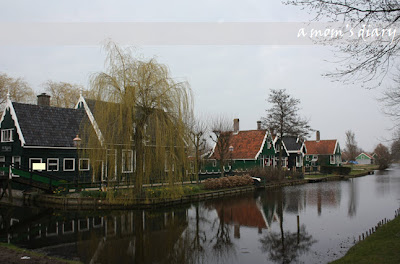I had half-day free before flying off to Amsterdam for the second league of my trip. I filled the time by wandering around Staré Mesto (Old Town) and Josefov (Jewish Quarter), Prague's former Jewish ghetto.
The historic Staré Mesto, founded in 1234, was the first of Prague's original five towns. Its establishment was the result of Prague's growing importance along central European trade routes. Staré Mesto's ancient streets are lined with many stately buildings, churches, shops, and theaters. The Old Town Square (Staromestské namestí) is surrounded by baroque buildings and packed with colorful cafes, craftspeople, and entertainers. In the middle of the square is a status of Jan Hus, a 15th-century preacher who challenged the Roman Catholic hierarchy and was burned for it.

The Old Town Square is perhaps best known for the Old Town Hall (Staromestská radnice) and its Astronomical Clock. Every hour, at the top of the hour, there’s a parade of saints and sinners.


Close up of the Old Town Hall

Notice the opened windows with two figurines on the picture on the right. That's the hourly parade going on.
At one corner of the Old Town Square is St. Nicholas Church (Kostel sv. Mikuláse).

The pretty twin spires looming over the Old Town Square belongs to the Church of Our Lady Before Týn (Kostel paní Marie pred Týnem).

One of Prague’s most photographed cultural and historical monuments, the Municipal House (Obecní dum) was built between 1906 and 1911. The Prague Symphony performs in this grand Art Nouveau building. Next to the Municipal House is the Powder Tower, built in 1475, was once part of Staré Mesto's system of fortifications, which later became a gunpowder storehouse.

I had the privilege to dine inside one of the grand halls inside the Municipal Hall, complete with a mini orchestra and opera performance.

On another day, we happened to return for lunch at a café within.

 The unassuming main entrance
The unassuming main entrance







































 View of the Prague Castle from Charles Bridge
View of the Prague Castle from Charles Bridge Sculptures on Charles Bridge
Sculptures on Charles Bridge This view reminds me of Amsterdam :-)
This view reminds me of Amsterdam :-)
 Streets of Mala Strana
Streets of Mala Strana A pretty open field near the Prague Castle
A pretty open field near the Prague Castle
 St. Vitus Cathedral (Chrám sv. Víta), Prague's most celebrated Gothic cathedral
St. Vitus Cathedral (Chrám sv. Víta), Prague's most celebrated Gothic cathedral St. George's Basilica (Bazilika sv. Jirí) and the Convent of St. George (Kláster sv. Jirí)
St. George's Basilica (Bazilika sv. Jirí) and the Convent of St. George (Kláster sv. Jirí) Toy Museum
Toy Museum
 Views of Prague from the castle
Views of Prague from the castle 






